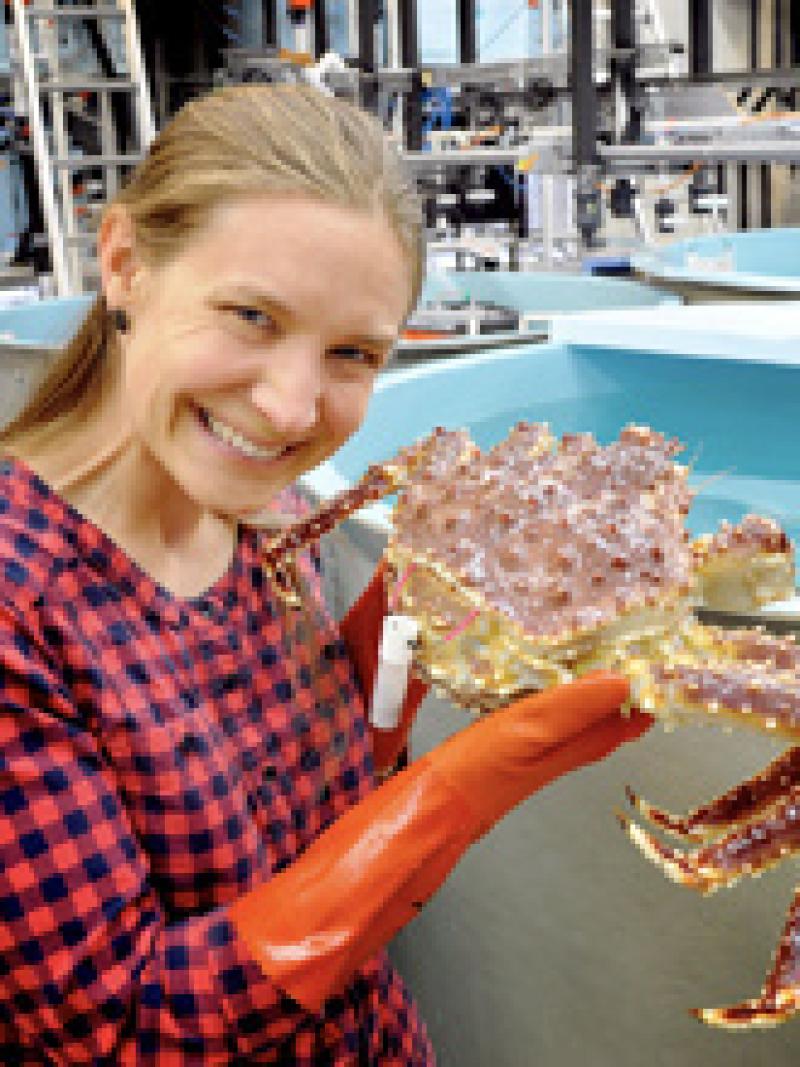Crab Pots Set
Our crab pots are baited, set, and hopefully catching crab! We chopped lots of herring and put it into bait jars and bags. Hopefully it will prove irresistible to the king crab—although my hands don’t smell all that appealing right now! Setting crab pots is mostly about watching out where your head and feet are. You don’t want to be hit by a swinging pot or get tangled in a line as the pot goes overboard. To launch a pot, we use a crane to move it from the deck onto a pot launcher. This is a platform that pivots the pots over the railing. Once we bait the pot and tie it shut, we tip it over the side. We then throw the coils of line and buoys in after it. For the most part, my job was to stay out of the way to let the crew do their job—even though I did get to throw in some buoys!


Tag and Follow the Crabs with Saildrone
Once we catch crabs, what happens next? We will attach acoustic tags to 150 mature male red king crabs so that we can “re-find” them at different times of the year. The acoustic tags send out a signal every 45 seconds that has the crab’s ID number and the temperature of the water. There are two types of tags, small tags and large tags. The large tags have a larger range than the small tags. These tags are easier for our listening device, a hydrophone, to hear. The smaller tag won’t transmit a signal quite as far, but because it’s small it is easier for the crabs to carry around. In October and next April, a saildrone will be deployed in Bristol Bay with a hydrophone receiver attached. The receiver will pick up the signal from the acoustic tags when the saildrone gets close to the tagged crabs. That way we’ll be able to see where the crabs have moved at different times of the year.

After setting the pots, we also deployed a couple acoustic tags that were attached to a weight (not a crab). Why did we do this? Well, now we have specific locations where we know there are tags. When we send out the saildrone, it can go to these locations to make sure that everything is working A-OK. We will also have the saildrone do several passes by these stationary tags to determine the detection distance (i.e., how far away the tag can be detected). This will help us understand how much of the seafloor the drone can search for our tagged crabs.
Now we’re going back to our trawl survey. We’ll come back and check the pots in a couple days. Cross your fingers that we get crab! If not, we’ll try setting the pots in a different spot.




